Foundation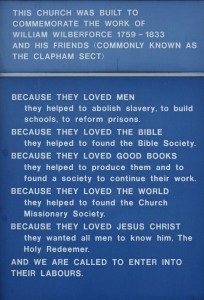
The Holy Redeemer Church was founded in 1927 by the Church of England with the development of Streatham Vale. The church building was built in 1932 to ‘commemorate the work of William Wilberforce’ (click on church notice board right); but the congregation first met in the Parish Hall, which still stands on Churchmore Road. The name ‘The Holy Redeemer’, came from the biblical title for Jesus. A ‘redeemer’ is someone who buys back something by paying a price. The Bible says that God sent his son, Jesus, to die on a cross to pay the price for our wrong doing against Him, so that all who trust him may enjoy a relationship with Him for eternity.
Growth
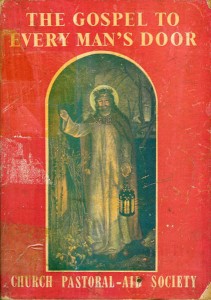
At the Parochial Church Council meeting on 28th December 1928, ‘it was agreed that a committee should be formed to discuss the finance of the church’ (Minute book of the finance committee). The first Church parish magazine was circulated in 1929 and Rev C.P. Turton reported that he was ‘more than pleased’ with the first issue which the finance committee calculated was received by 700 people in the parish. During the first 6 months of the church’s opening, there were 730 communicants and during the second 6 months this grew to 1010.
Building
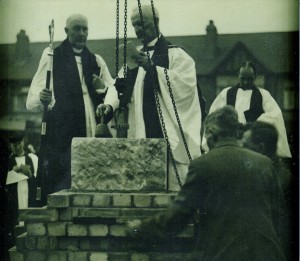 It was clear that a larger church building would be required for the congregation. So in September 1930, the church began fund raising for the building work; one of the initiatives was the ‘Brick fund books’. “I was about 12 years old… when a small booklet was circulated around the parish. It consisted of pages of perforated bricks and for each brick you want to buy a brick was torn off for the price of one shilling (5 pence). These one shilling bricks are today part of our church”, said M. Edwards. In the accounts for 6 months to 30th June 1931, it was recorded that the church had managed to raise £5960 from donations (approximately £27k in today’s money).
It was clear that a larger church building would be required for the congregation. So in September 1930, the church began fund raising for the building work; one of the initiatives was the ‘Brick fund books’. “I was about 12 years old… when a small booklet was circulated around the parish. It consisted of pages of perforated bricks and for each brick you want to buy a brick was torn off for the price of one shilling (5 pence). These one shilling bricks are today part of our church”, said M. Edwards. In the accounts for 6 months to 30th June 1931, it was recorded that the church had managed to raise £5960 from donations (approximately £27k in today’s money).
M Travers & M W Grant architects were commissioned to design the new church building, the plans were approved in 1931, and that year the foundation stone was laid. The new building was completed in 1932 on the corner of Streatham Vale and Churchmore Road. The church had a traditional orientation, with six bays making up the nave covered by a timber barrel vaulted roof with ornate tiles (click for more information on the design). It was fitted with an organ built by R. Spurden Rutt & Co Ltd in London costing £1318. The church organist added parts to the organ from various instruments in 1973, doing much of the work himself. The building has remained largely unchanged to the present day, except for the removal of the iron railings outside the church during the Second World War to help the war effort.
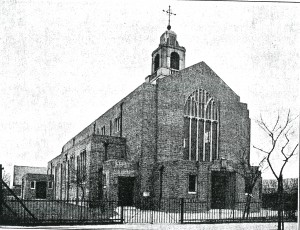
1940s with the iron railings
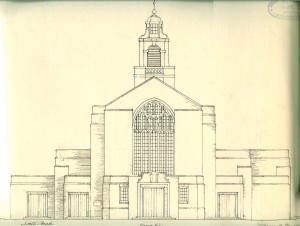
1930s Plans of Holy Redeemer Church
Vicars
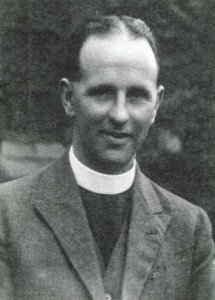
There have been seven incumbents since the founding of the church. The first vicar, C.P Turton (pictured right) was instituted in 1927 and served until 1940. He was followed by Gerald Knight (1941-1946), Eric Atkins (1947-1959), Ernie Bloxham (1960-1972), John Terry (1972-1980) and Brian Lipscomb (1980-1991). Our current vicar, Ian Gilmour, was instituted by the Right Reverend Dr Peter Selby (Bishop of Kingston Upon Thames) and the induction was taken by the Venerable Richard Bird (Archdeacon of Lambeth) on 5th October 1991. J. Welcome recalled the day: “I remember the night when Ian was instituted as Vicar of Holy Redeemer. A coach load of members from his previous church were in attendance and a good time was had by all, both spiritually and socially”.
Change
Much of life at the Holy Redeemer has remained the same over the years. The patron of the church has remained the Church Pastoral Aid Society; the church has retained a love of the Bible and Jesus Christ (in keeping with the spirit of Wilberforce); and the church’s aim still reflects the inscription above the door as you leave the church: ‘Jesus said, ye shall be witnesses unto me’. However, some things have changed with the times. The style of worship has changed, as have the church activities – the ‘Beat group’ who played at the ‘young wives garden party’ in 1965 has been replaced by Hip-hop at young people’s events.
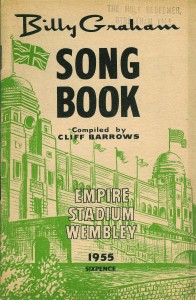
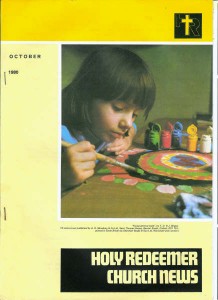
1960s song book …. 1980s parish magazine
Today
The church family is now around 90 and is growing in number and diversity reflecting the local area. In 2007, the congregation moved out of the main church building and back into the Parish Hall, as the main building was leaking and in need of serious repair. However, in 2012 the church launched the ‘Plans to Serve’ building project to renovate the building so that the work can continue well into the 21st Century.
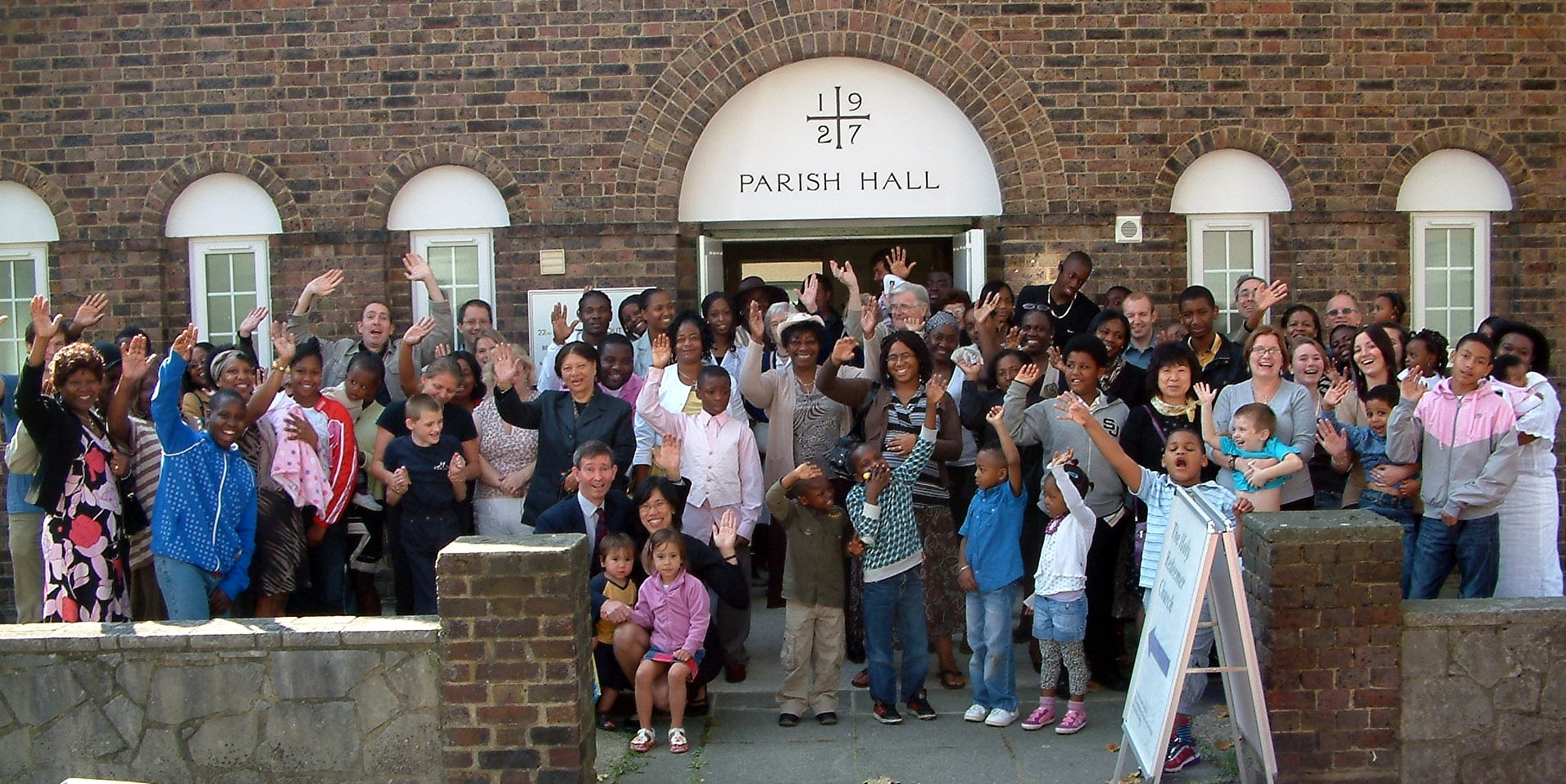
The Holy Redeemer in 2008
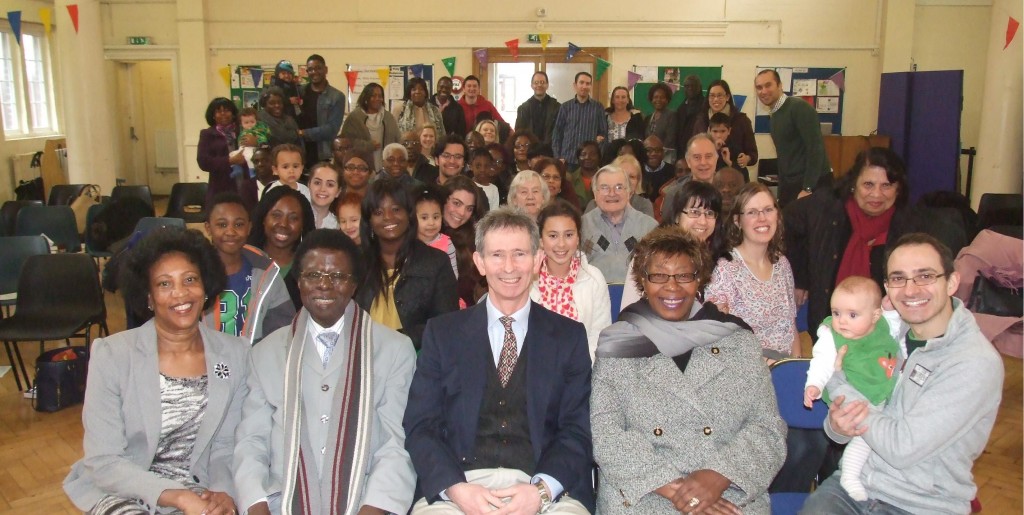
The Holy Redeemer in 2016
Memories
“The night of my first Confirmation Class under Rev C.P.Turton, on returning home, we saw that Crystal Palace was alight” J. Griffin
“My father, Sid Edwards, [explained] the detail in the fabric of the building that is our church. He drew my attention to the care of the carpentry in the construction of the doors and explained how the scrolled pews were specially designed for this particular church to complement other structures and fittings” N. Edwards
“I remember the sponsored Parish Walk in 1970, when we walked around the boundary of the parish (which is 3 miles round)…Margret had to carry Sally (then 3 years) part of the way round…Alan Bennett went round 13 times – running most of the way!” M. Matcham
“I remember our church first when I was married there on 24th September 1949…I first attended Church regularly in April 1984 and installed the public address system in 1988, which I upgraded in 1998. In the early days, I made audio tapes of the services for all who wanted them. The greatest demand was for special Christmas and Easter tapes” V. Bartlett
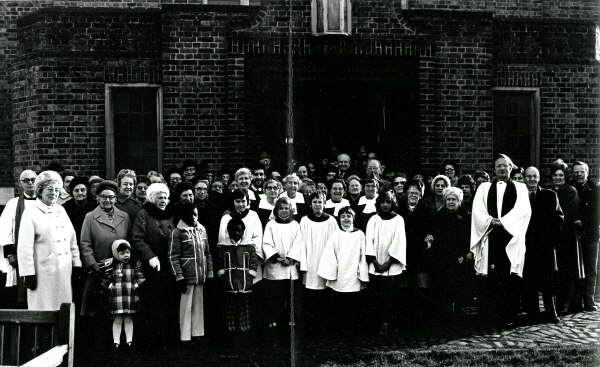
1970s Holy Redeemer Congregation with Vicar John Terry
If you have more information about the history of Holy Redeemer, please contact us.
Looking for information from our records? See what is held at London Metropolitan Archives.
